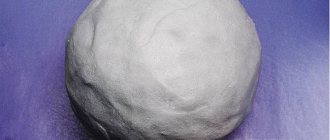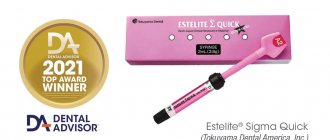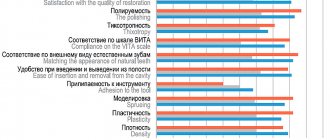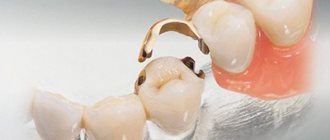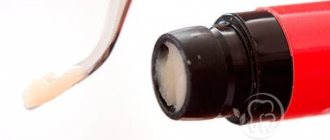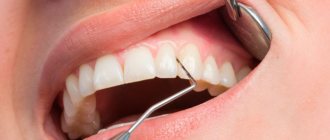New technologies are constantly emerging in dentistry, thanks to which higher-quality dental restorations become possible. These innovative techniques include dental modeling. It allows you to obtain perfectly matching prostheses for a specific patient. With the help of modeling, it became possible to accurately reproduce the anatomical forms and functional features of the dentition. The result is high aesthetics of the entire oral cavity.
There are two types of dental modeling:
- The direct method is diagnostic imitation using wax.
- The indirect method is modeling, so to speak, in full size.
Indirect modeling steps
Indirect modeling takes place in several stages:
- First of all, impressions are taken from the upper and lower jaws. This is done using silicone, and the most important thing is that it is of high quality. At the same stage, the jaws are fixed in the usual closed state with the preparation of the bite ridges and registration taking into account the face bow.
- Working with a specific device that allows you to obtain an accurate model of the movement of the lower jaw and adjust all movements of the masticatory apparatus at the time of its functioning. If the bite is low, the device, taking into account facial characteristics, calculates how much it needs to be raised.
- Installation of the resulting silicone model on a plaster base in an article (special device) for analysis. At this stage, the dental technician takes into account the wishes of the patient and the doctor regarding functionality and aesthetic data. Next, a wax model is made, shown to the patient and, if necessary, adjusted.
If all of the above stages pass without any difficulties, then a permanent prosthesis is made in the laboratory.
Purpose of application
The need for Wax-up is due to the following factors:
- Reproduction of dental units from wax is the starting stage of restoration work. It is required for planning future work of dentists. Wax impressions help to track the individual characteristics of the structure of teeth and avoid errors during implantation.
- Calculation of the cost of upcoming dental procedures.
- Temporary prosthetics. The specialist takes samples for the production of intermediate prosthetic restorations made of plastic. The technology is used when additional time is needed to create fixed prostheses.
Our team of doctors
Maxillofacial surgeon, Implantologist
Bocharov Maxim Viktorovich
Experience: 11 years
Dental surgeon, Implantologist
Chernov Dmitry Anatolievich
Experience: 29 years
Orthopedist, Neuromuscular dentist
Stepanov Andrey Vasilievich
Experience: 22 years
Endodontist, Therapist
Skalet Yana Alexandrovna
Experience: 22 years
Orthopedic dentist
Tsoi Sergey Konstantinovich
Experience: 19 years
Dentist-orthodontist
Enikeeva Anna Stanislavovna
Experience: 3 years
Flaws
The wax modeling technique is considered ideal by many dentists. The technique itself really has no disadvantages.
But there is one drawback related to the material - it is a fairly high rate of thermal expansion of wax in comparison with other materials used for modeling.
Its high numbers are explained by the polymericity of the wax. As a result, dimensional discrepancies in castings and insufficient fixation of the cast prosthetic product may occur.
To prevent such a drawback, a measurement compensation technique is used by expanding the molding material and applying a compensation varnish.
Stages of direct modeling
Direct modeling is carried out by the doctor directly in the patient’s oral cavity. In this case, it is possible to accurately determine the appropriate shape of the prosthesis. This procedure can be figuratively compared to trying on a dress:
- The doctor makes impressions of the teeth using silicone, where special attention is paid to the palatal part, without which it is impossible to obtain a full-fledged impression. The silicone impressions are filled with a composite mass, usually a different color from the teeth, and then the copy is placed on the patient’s jaw.
- The resulting impression is taken and excess composites are removed, and adjustments are made if necessary.
- Next, the patient’s teeth are cleaned of plaque using special accessories; they are not sawed or ground down, thereby maintaining their integrity.
- The base shade of enamel is applied to the template itself, then the remaining layers are applied one by one. Thus, the tooth is restored taking into account all the details of its surface. The structure is restored gradually, and finally the corresponding shade of enamel is applied.
When the surface of the model is completely dry, it is processed mechanically. The dentures are treated with a specific glue and attached to the prepared model. The patient is allowed to spend a certain time with temporary prostheses, thereby observing his own sensations and deciding whether further correction is needed. In the meantime, the doctor will be able to study the reactions of the lower jaw joint. The technician is allowed to make several models at the same time, then the patient has a chance to choose the most optimal option.
If the client does not make any complaints, then the resulting models are sent to the laboratory for the production of permanent prostheses. Direct restoration is especially suitable for patients who need to improve their bite and those who have severe enamel wear. Including models, prosthetics on implants is not complete.
Advantages
Despite the fact that the use of the Wax-up technique for orthopedic correction of defects in the oral cavity requires a specialist to perform additional work that requires the expenditure of material resources and time, doctors advise not to refuse to perform it for a number of reasons:
- The procedure allows you to prevent inaccuracies in calculations during the production of implants, as well as eliminate identified errors at the first stage.
- Manifestations of unpleasant sensations and discomfort upon completion of prosthetics are excluded.
- The duration of adaptation to new artificial units is reduced to a minimum .
- A person can examine in detail the wax model of the future prosthesis , clarify some of the nuances that interest him, thereby eliminating misunderstandings between the patient and the specialist regarding the vision of the result.
- The simulation does not affect healthy neighboring units and does not damage them.
- The preparation of supporting teeth is performed in a gentle way , which also eliminates discomfort and unpleasant sensations.
An important advantage is the type of material used in modeling. Wax is an inert natural material that does not cause adverse reactions in the body.
This is interesting: Sinus lift of the jaw during dental implantation - what is it?
Advantages of modeling
Artistic modeling of teeth can do a lot - from deepening or protruding a tooth to correcting the shape of the entire dentition. This type of prosthetics has many advantages:
- Demonstration to the patient of a visual, final result.
- Elimination of any defects at the very beginning.
- Absent future discomfort.
- Quickly addictive.
- The adjacent teeth are not damaged.
- All wishes of the patient are taken into account.
- It is possible to adjust the model.
Completely finished models can only improve the final result of the restoration if they are of good quality. Therefore, it makes sense to contact the highly qualified Implantmaster clinic in Moscow, where professionals work exclusively with modern equipment, which guarantees high quality of the final result.
Author:
Peculiarities
In dentistry, modeling teeth using wax is called Wax-up technology. Dentists use two methods of such modeling. One is the formation of a sample of the future tooth on stumps (gypsum bases), and the second is a combination of Wax-up and Mock-up techniques, creating a composite model directly in the mouth based on wax.
This is a mandatory procedure when performing orthopedic correction of defects in the oral cavity. Models need to be made for many purposes. First of all, it is necessary for the doctor to draw up a plan for the upcoming restoration. The wax model serves as a test material, using it the orthopedist and technician establish the method of restoration of the damaged tooth, discuss the scope of further work and possible difficulties in prosthetics.
If you have a model, it will be easier for the patient to explain all the features of the treatment and agree on the final appearance of the teeth. Carrying out this work will allow us to eliminate all inconsistencies and inaccuracies at the initial stage of prosthesis manufacturing.
Wax is the most suitable material, which lends itself well to processing, and after it cools, it quickly and easily takes the desired shape. To perform such work, it has excellent characteristics, namely:
- quite flexible;
- dense;
- lasting.
Thanks to these properties, the technician is able to very accurately recreate the required dimensions of the tooth so that the prosthesis made is as similar as possible to his own. Wax modeling of teeth is necessary to work out the nuances of future work to restore the functionality and aesthetics of the dentition.
Indications
Wax-up technology is recommended and used for any indirect aesthetic restoration, namely for crowns, lumineers, bridges, veneers.
Thanks to the creation of wax models, the final result from the production of these products is calculated as accurately as possible.
The technique is also applicable for correction of parameters (shape and size) of the crown part, as well as for complete reconstruction of the dental form. In the second option, the technology is used:
- in the production of temporary orthopedic products on samples with prepared units;
- for planning the placement of removable and non-removable systems;
- when determining the amount of teeth grinding;
- to evaluate the result of occlusion correction on a diagnostic model;
- when planning the exact placement of implants with immediate subsequent loading.
Wax modeling can also be used for orthopedic correction of defects in the location of teeth, for example, when correcting the progenic conformity of the jaws.
Material requirements
To carry out wax modeling, specialists use only soft material - wax wax or beeswax.
The material for modeling was not chosen randomly. This is a natural, fairly dense and plastic material that does not contain toxins. The model created from wax can be easily adjusted and an ideal cast of the future prosthesis can be made in all respects.
In some cases, carnauba wax can be used instead of bee raw materials. A material of plant origin extracted from the carnauba palm. It is characterized by increased rigidity and hardness, and also has a higher melting point.
To obtain a high-quality design, the material must meet certain conditions and requirements. So, wax must have the following characteristics:
- low shrinkage during cooling - from 0.1% to 0.15% of the total volume at temperatures from 90°C to 0°C;
- fairly good ductility in the temperature range from 40°C to 55°C;
- hardness at temperatures from 35°C to 40°C, ensuring that the sample retains its shape when it is in the mouth;
- homogeneous composition after dissolution.
This is interesting: The mechanism of development of stomatitis from dentures and ways to solve the problem
The raw material should have no delamination or excessive stickiness during processing, and there should be no ash content after burning the sample. It should also not stain the plaster model.
Contraindications
The Wax-up procedure is considered completely painless and safe for patients, since it in no way damages the integrity of the bone elements or gums.
At the time of wax application, the patient does not feel any pain, so the use of painkillers is inappropriate here.
Since the modeling is based on beeswax, people with allergies to bee products may experience a cross-reaction.
If you have an allergy, you should tell your doctor about it in advance. To obtain an impression, he will select a different material.
When it comes to contraindications, the Wax-up procedure should not be carried out if:
- there are acute diseases of the oral cavity;
- undergoing rehabilitation process after radiation therapy;
- the patient has a drug addiction;
- diseases of the jaw bone tissue develop;
- acute inflammatory processes occur on the mucous membrane;
- the patient has general inflammatory processes in the body, etc.
Creating a wax model takes from 20 minutes to an hour. It all depends on the location of the impression, the number of defects, etc. Before carrying out the procedure, the doctor must tell all the intricacies of the Wax-up.
Preparatory process
Before doing wax modeling of teeth, you need to complete a number of appointments, one of the first is conducting diagnostics of the oral cavity. If necessary, an x-ray and computed tomography of the jaw should be performed. It is also noted that in case of oral diseases, it is necessary to undergo a course of treatment. Don’t forget to sanitize and follow hygiene rules.
Only after a full examination and treatment course has been carried out, the doctor begins to create impressions.
Reviews
How many negative sensations and experiences do deformed, missing or chipped teeth bring to a person?
To correct these defects, when turning to a dentist, he cannot always clearly explain his vision of the result in words. Wax modeling allows you to resolve this situation.
You can share your experience and impressions of Wax-up modeling by leaving a review in the comments to this article.
If you find an error, please select a piece of text and press Ctrl+Enter.
Tags wax modeling fixed dentures
Did you like the article? stay tuned
Previous article
Features of removing a dental cyst using cystotomy
Next article
What problems can be eliminated by relining a removable denture?
Price
Installation of certain types of orthopedic structures in the oral cavity using wax modeling is an expensive dental service. The high cost of the technology is explained by the price of the starting material, the use of special equipment and the high accuracy of the process.
The approximate cost of creating a wax model for 1 unit of dentition varies from 1200 rubles. up to 1500 rub.
The cost of the service may increase if several units need to be restored at once or the defect being corrected is very complex.
The final figure for the use of wax-up modeling is usually announced by the doctor after a visual examination of the oral cavity and examination of x-rays.
The video provides additional information on the topic of the article.
